Buttonholes are not just utilitarian openings; they are miniature works of craftsmanship that blend form and function in the world of apparel design. These subtle features allow buttons to elegantly secure garments while adding artistic flair.
Ranging from the straightforward straight stitch buttonhole to the intricate tailor’s buttonhole, each type has a distinct purpose and aesthetic appeal.
Whether you seek durability, sophistication, or a touch of tradition, the array of buttonhole styles provides designers and sewists with a palette of possibilities to enhance clothing’s structure and appearance.
Explore the fascinating realm of buttonholes, where practicality meets creativity in every stitch.
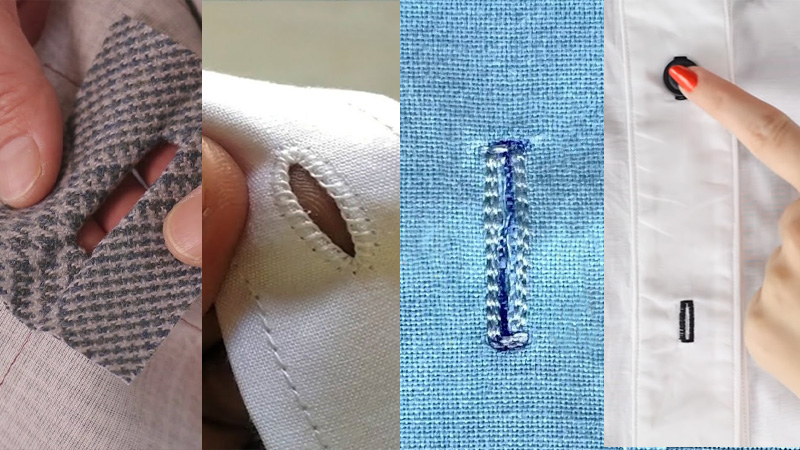
What Is Buttonhole?
A buttonhole is a precisely crafted opening in fabric that allows a button to pass through, securing garments when fastened. It serves a dual purpose: functional and aesthetic. Functionally, buttonholes prevent clothing from slipping off and ensure a snug fit.
Aesthetically, they contribute to the overall design, adding detail and style to garments. Buttonholes vary in type, including the classic straight stitch, more intricate keyhole, reinforced variations for durability, and decorative options like piped or bound buttonholes.
Depending on fabric, purpose, and design, different buttonhole techniques are employed. This unassuming element has a significant impact on the functionality, appearance, and craftsmanship of clothing.
Types of Buttonholes -Explore 17 Types in Clothing with Picture
Buttonholes are essential elements in clothing design, serving both functional and aesthetic purposes. They allow buttons to pass through the fabric, securing garments and enabling easy closure.
Depending on the design, fabric, and intended use of the garment, different types of buttonholes are employed.
Here, we’ll explore 17 types of buttonholes commonly used in clothing:
1. Straight Stitch Buttonhole
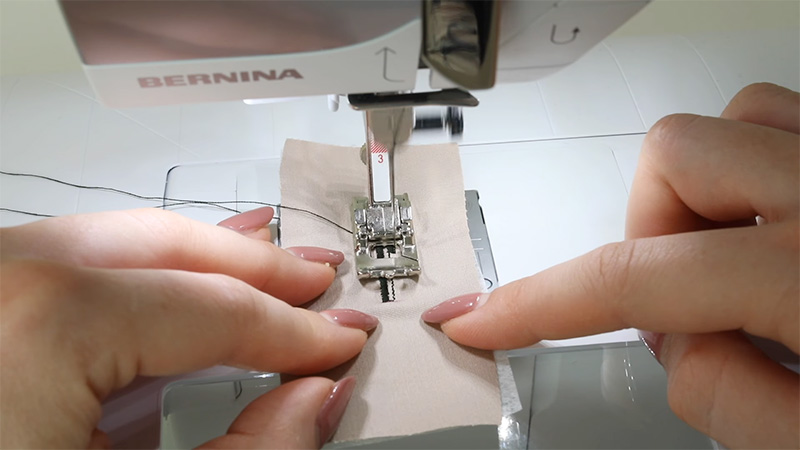
This quintessential buttonhole serves as the foundation of buttonhole techniques. Crafted by a simple straight stitch along the edges, it’s uncomplicated yet functional.
Best suited for delicate and lightweight fabrics, such as cotton or silk blouses, where its unobtrusive nature maintains the garment’s elegance.
2. Keyhole Buttonhole
With its rounded end resembling an actual keyhole, this buttonhole variety offers a touch of sophistication. Well-matched for heavier fabrics like wool coats, it ensures a secure closure while elevating the garment’s appearance.
3. Round End Buttonhole
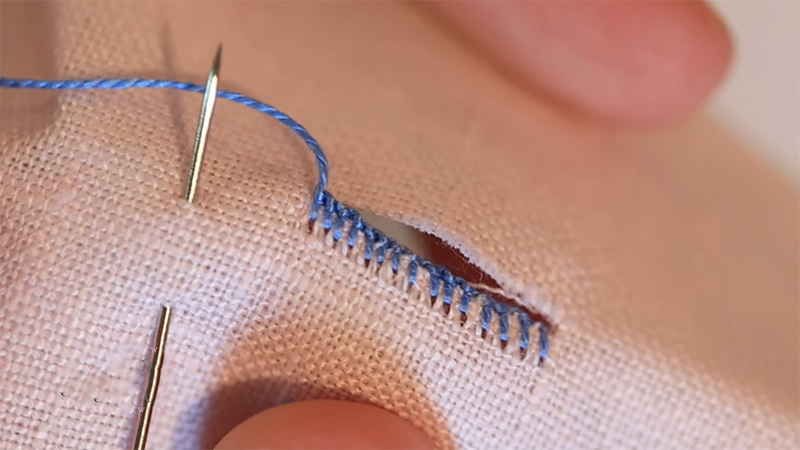
Similar to the keyhole buttonhole, the round end variation eschews the angularity for a completely rounded shape. This lends itself particularly well to thicker fabrics, providing a visually pleasing closure option for woolen jackets or outerwear.
4. Reinforced Buttonhole
When durability is paramount, the reinforced buttonhole steps in. By utilizing multiple passes of stitching, it fortifies the buttonhole’s integrity, making it an apt choice for heavy fabrics like denim and areas that encounter significant strain, such as pockets or waistbands.
5. Bartack Buttonhole
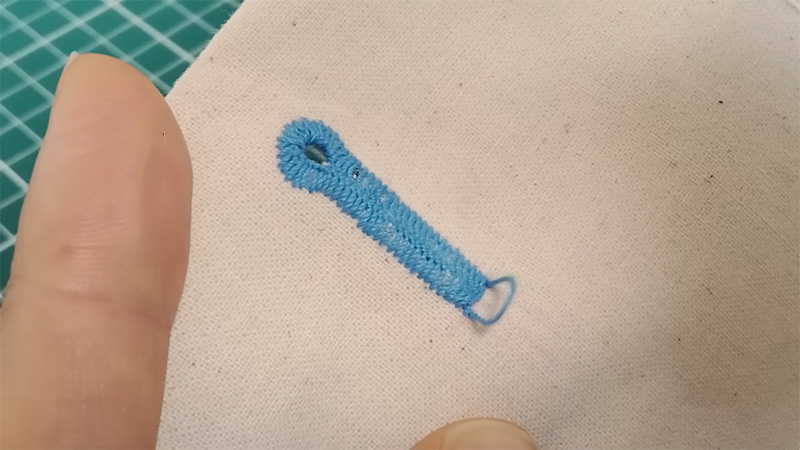
Exhibiting a utilitarian flair, the bartack buttonhole introduces tight zigzag stitching at both ends. This reinforces the buttonhole, particularly suitable for rugged wear like jeans and workwear where reliability is crucial in demanding environments.
6. Bound Buttonhole
Elevating buttonholes to an art form, the bound buttonhole employs a separate piece of fabric to encase the buttonhole edges.
This method not only strengthens the buttonhole but also adds a touch of sophistication and luxury to the garment.
Commonly seen in high-end tailoring, it’s a visual delight that showcases meticulous craftsmanship.
7. Piped Buttonhole
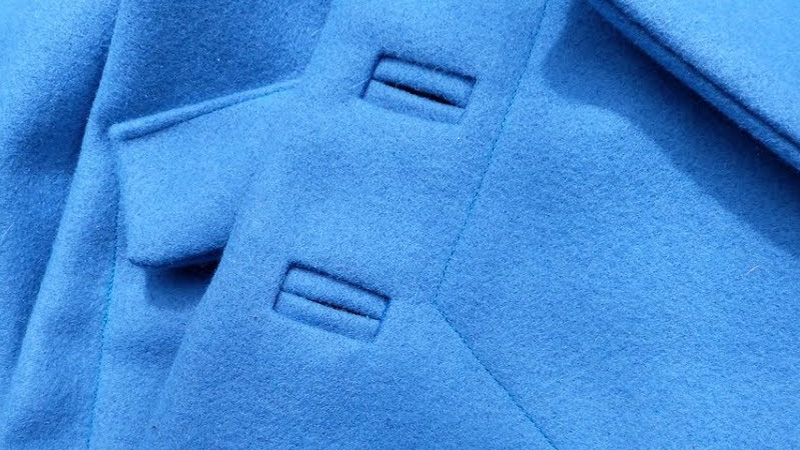
Taking inspiration from the bound buttonhole, the piped buttonhole introduces a cord or piping along the buttonhole’s edges. This results in a raised edge effect that lends dimension and texture to the garment.
The piped buttonhole is an exceptional choice for those seeking to accentuate their design with subtle detailing.
8. Machine Eyelet Buttonhole
Embracing the advantages of modern technology, the machine eyelet buttonhole is created using a sewing machine. The machine forms small, closely spaced stitches to produce the buttonhole, resulting in a neat and consistent appearance.
It’s particularly well-suited for lightweight fabrics that require precision without compromising on quality.
9. Hand Worked Buttonhole
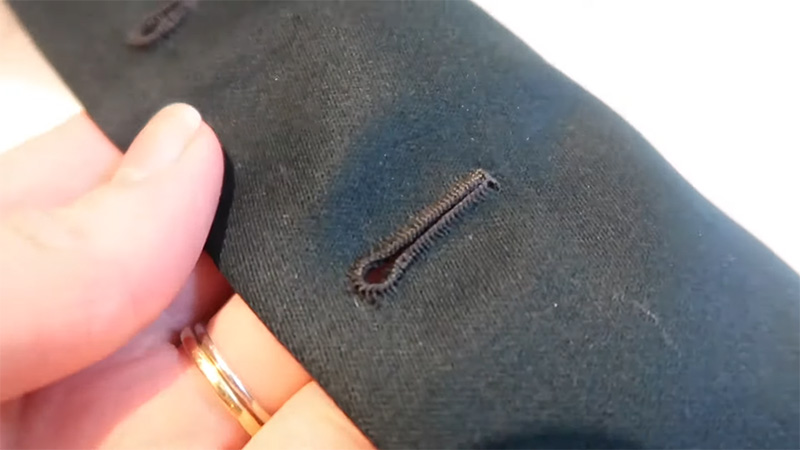
A testament to traditional craftsmanship, the hand-worked buttonhole involves meticulous stitching done entirely by hand. This technique offers unparalleled precision and control, making it a staple in bespoke tailoring.
Hand-worked buttonholes exude a timeless elegance that’s hard to replicate using automated methods.
10. One-Step Buttonhole
A marvel of modern sewing machine technology, the one-step buttonhole function automates the buttonhole-making process. With just a push of a button, the machine calculates the buttonhole size and stitches it accordingly.
This feature streamlines the sewing process, making it accessible even to beginners and reducing the potential for errors.
11. Four-Step Buttonhole
A throwback to older sewing machines, the four-step buttonhole involves a manual process broken down into four distinct steps. Each step comprises different stitches, forming the complete buttonhole.
Although more time-consuming and intricate compared to modern methods, this technique holds nostalgic charm and is still employed by those who appreciate traditional sewing techniques.
12. Corded Buttonhole
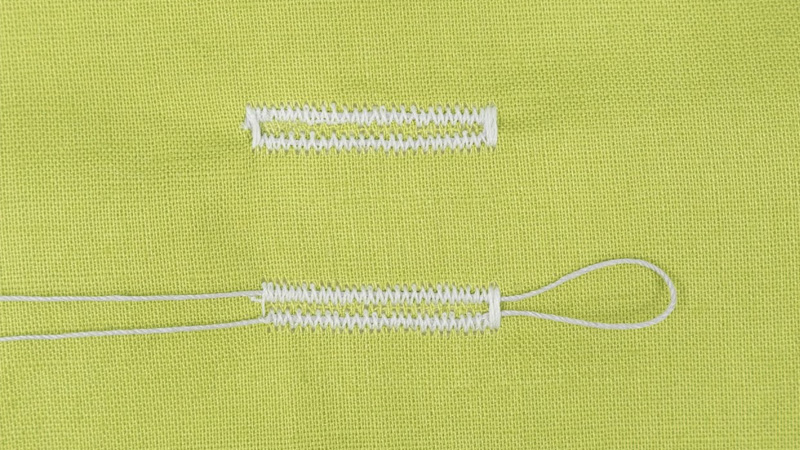
For a unique tactile effect, the corded buttonhole incorporates a cord beneath the stitches. This addition creates a raised ridge along the buttonhole’s edges, offering dimension and texture.
Corded buttonholes are particularly striking on heavier fabrics and can be tailored to match the garment’s aesthetic.
13. Keyhole Slot Buttonhole
A creative variation of the classic keyhole buttonhole, the keyhole slot version substitutes the round end for a slot-like opening.
This modern twist introduces a contemporary element while maintaining the functionality and visual appeal of the keyhole design.
14. Tailor’s Buttonhole
The epitome of artisanal craftsmanship, the tailor’s buttonhole is meticulously hand-stitched. Often found in high-end and bespoke garments, this buttonhole reflects the dedication and skill of the tailor.
It exudes a level of sophistication that aligns perfectly with the refined nature of luxury fashion.
15. Linen Buttonhole
Harking back to historical sewing techniques, the linen buttonhole is associated with garments made from linen fabric.
Crafted using linen thread, it creates a textured and slightly rustic appearance. While historically accurate, it also adds a touch of vintage charm to contemporary designs.
16. Knit Buttonhole
Specially designed for knit fabrics, the knit buttonhole takes into account the stretchiness of the material. It ensures that the buttonhole expands and contracts along with the fabric, maintaining both functionality and comfort.
17. Purl Buttonhole
An example of the marriage between functionality and aesthetics, the purl buttonhole is achieved by alternating knit and purl stitches.
This arrangement results in a visually captivating textured effect, making it an attractive choice for decorative knitwear like cardigans and sweaters.
Tips to Choose Buttonholes for Your Clothes
Choosing the right buttonhole type for your clothes can enhance both their functionality and aesthetics.
Consider these tips to make informed decisions:
Fabric Type
The fabric’s weight and texture play a significant role in selecting buttonholes. Lightweight fabrics like silk or cotton pair well with simpler buttonholes like the straight stitch or machine eyelet, ensuring they don’t overwhelm the delicate fabric.
Heavier materials like denim or wool demand sturdier options such as reinforced or bartack buttonholes to withstand the fabric’s weight and strain.
Garment Purpose
Think about how the garment will be used. Everyday wear requires buttonholes that can handle frequent use, making bartack or reinforced buttonholes in high-stress areas like waistbands or cuffs a smart choice.
For formal attire, consider decorative options like bound or piped buttonholes to elevate the garment’s elegance.
Design Aesthetic
The buttonhole’s design should harmonize with the overall look you’re aiming for. Tailor’s buttonholes bring bespoke sophistication, while piped or bound buttonholes introduce intricate detailing.
Align your buttonhole choice with your design vision to create a cohesive and polished appearance.
Stretch Fabrics
When working with stretchy fabrics like knits, prioritize flexibility. Knit buttonholes expand and contract with the fabric, ensuring a snug yet comfortable fit without compromising the material’s elasticity.
Skill Level
Your sewing skills influence your buttonhole choice. Automated machine-generated buttonholes, like one-step options, provide convenience for beginners.
On the other hand, if you’re an experienced sewist seeking an artisanal touch, hand-stitched or tailor’s buttonholes showcase your expertise.
Garment Thickness
Thickness matters, especially in terms of durability and texture. Corded buttonholes shine on thicker fabrics. By inserting a cord beneath the stitches, these buttonholes not only offer extra strength but also create a distinctive raised ridge.
Personalization
Infuse your personal preferences into your buttonhole selection. If you appreciate handcrafted details, explore the world of tailor’s or hand-stitched buttonholes. These choices not only add uniqueness but also convey a sense of individuality.
Button Size
Ensuring harmony between the buttonhole and button size is essential for both form and function. By achieving a snug yet comfortable fit, copywriters can emphasize how this attention to detail enhances ease of use and longevity.
It’s time we recognize the importance of this seemingly small aspect in creating garments that are both aesthetically pleasing and built to last.
Garment Style
Different buttonhole styles complement different garment styles. Keyhole or slot buttonholes introduce a creative twist, perfect for modern or avant-garde designs. On the other hand, a classic straight stitch buttonhole suits a wide range of styles, offering versatility.
Experimentation
Before finalizing your buttonhole choice, experiment on scrap fabric. This test-run allows you to understand how each buttonhole type interacts with your specific fabric and design, preventing any unwelcome surprises in the final product.
FAQS
Absolutely! Each buttonhole type serves a specific purpose, making some better suited for lightweight fabrics like silk, while others excel with heavy materials like denim.
Yes, the knit buttonhole is designed to accommodate the elasticity of knit fabrics, allowing buttons to fasten snugly without compromising the fabric’s stretch.
A corded buttonhole incorporates a cord under the stitches, creating a raised ridge. This not only adds dimension but also reinforces the buttonhole’s edges for enhanced durability.
While a traditional keyhole buttonhole features a rounded end, a keyhole slot buttonhole introduces a slot-like opening. This variation adds a contemporary twist while retaining the original functionality.
Yes, the purl buttonhole is primarily decorative, achieved by alternating knit and purl stitches. It imparts a textured finish, making it a stylish choice for embellishing knitwear.
To Recap
In the intricate tapestry of garment creation, buttonholes stand as a testament to the fusion of functionality and design. From the unembellished utility of the straight stitch to the masterful artistry of the tailor’s hand, each buttonhole type imparts its unique character to the world of fashion.
As the threads of tradition and innovation intertwine, these unassuming apertures reveal their significance, not just in securing buttons, but in elevating the essence of clothing.
Through choices that range from resilience to elegance, designers and creators wield a powerful tool, breathing life into fabrics. Buttonholes, in all their diversity, unite the practical and the aesthetic in a harmonious symphony of stitches.
Leave a Reply